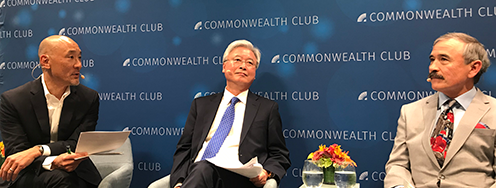The Budget Crisis Offers Opportunity To Bend The Arc Of Nuclear Policy
The U.S. government spends $54 billion a year on nuclear weapons and related programs. Despite the deep fiscal crisis, these budgets are about to go up — to a whopping $700 billion over the next 10 years. It is not at all clear why.
"When President Obama committed in April 2009 to seek “the peace and security of a world without nuclear weapons,” he also said he would maintain a “safe, secure and effective arsenal to deter any adversary.” But the procurement of new weapons is racing ahead of the policy to shrink the arsenal. Negotiated reductions and development of a new nuclear policy are lagging. The nuclear bureaucracy remains entrenched, pushing new contracts and new programs that will lock in out-dated nuclear postures for another generation. Budgets are dictating strategy.
Case in point is the Navy’s program to build a new fleet of nuclear-armed submarines to replace the 14 subs now carrying 1,150 warheads, each 10 times more powerful than the bomb that destroyed Hiroshima. The Navy has almost $1 billion in the current budget to begin production of 12 replacement boats that will start slipping into the water around 2030 and patrol well past the middle of this century.
The program’s cost has skyrocketed to over $100 billion, or over $8 billion per sub — even after DOD reviews scrubbed the requirements down from original designs. During procurement, each new nuclear sub will consume at least 40 percent of the Navy’s annual shipbuilding budget. This will force the service to drop an estimated 56 conventional ships from its 30-year plan.
Congress has not been presented with a coherent strategy for why America requires the ability to launch 8,000 Hiroshimas from sea 40 years from now — or field new bombers, or new long-range missiles, or new warheads. But all are barreling forward in current budgets.
This procurement-policy gap not only undermines the bipartisan expert consensus that nuclear reductions enhance American security, but keeps alive weapons designed for last century’s conflict by draining funds from military programs needed for today’s challenges. Twenty-first century threats will not be solved by 1950s thinking.
Independent experts have detailed the substantial savings available by delaying or canceling some of these nuclear programs. CAP’s Larry Korb concluded as part of a defense task force that $140 billion could be saved over the next ten years by reducing down to 1,000 deployed nuclear weapons. Sen. Tom Coburn (R-OK) recommended a different mix of weapons carrying 1,220 warheads for a savings of $79 billion over the next 10 years.
The budget crunch is shifting the nuclear policy ground faster than most analysts understand, faster than the White House understands. This February, an administration colleague advised that my concerns about the submarine program were pointless, that stopping a major Navy procurement program was “unthinkable.” Yet, just last month, Norman Polmar, the dean of Navy analysts, said the $100 billion price tag had made the sub “simply unaffordable.”
From “unthinkable” to “unaffordable” in under six months. The same is true for nuclear programs across the board, from bombers to bomb factories.
The White House has to catch up. The election cycle has been closing the policy “window” that opens up with the start of every new administration. But now the budget cycle has opened a new window, a new lever to achieve the president’s original goals. He has one more chance to bend the arc of nuclear policy. If he misses it, he may not get another.
This post originally appeared on Think Progress Security.



